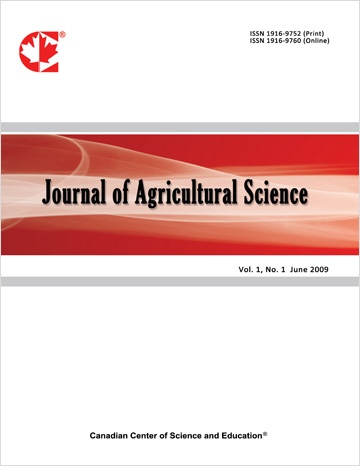Genetic Diversity and Genetic Structure in Natural Populations of Prunus davidiana Germplasm by SSR Markers
- Zhongping Cheng
- Ksenija Gasic
- Zhangli Wang
- Xuzhong Chen
Abstract
Prunus davidiana, which is a wild species, can be used as rootstocks for cultivation of fruit trees, breeding germplasm for improving resistance to diseases and insects, pioneer trees for recovering vegetation in arid areas, decoration trees for parks and gardens, and a potential medicinal plant for human health. Despite the valuable characteristics of P. davidiana, the genetic variations of resources of P. davidiana remain unclear. In this study, we used seven natural populations (GE; GH; ST; SF; SJ; SY; NX short for Heshui, Gansu; Huating Gansu; Taibai, Shaanxi; Fuxian, Shaanxi; Jiaocheng, Shanxi; Yangquan, Shanxi; Xiji, Ningxia, respectively) of P. davidiana collected at distribution center in China to generate a fingerprint using 15 SSR markers by multifluorophore fragment analysis to assess transportability of the markers, genetic diversity and genetic structure within and among populations. Our data show that a 92% transportability rate was found from closely related species of P. davidiana based on SSR markers developed, and DNA polymorphisms were also detected among accessions by the selected SSR markers. The SSR markers amplified 137 alleles in total for all accessions with an average value of 9.13 alleles, ranging from the highest value of 15 alleles for UDP96-013 to the lowest value of 3 alleles for CPPCT017. Rare alleles, present at less than or equal to 5% of all accessions by marker, showed the highest value in BPPCT 020. By analyzing all accessions, the majority of the 192 accessions from seven populations were found to cluster together according to the given populations, while the minority from the given populations was distributed within clusters. The SY population appeared to have the most diversity among populations, followed by the NX population according to comprehensive analysis of all indices. The seven populations analyzed by unweighted parsimony and principal coordinate analysis were divided into two groups: ST, SY and SF; NX, GE, SJ and GH. A stark difference was found in the genetic variation—with 16% among populations and 84% within populations. Our results from this study imply that most SSR markers developed from related species can be used for genetic analyses of P. davidiana; some markers have more relevant applications for genetic analyses such as UDP96-013 for diversity evaluation and BPPCT 020 for mining rare alleles in P. davidiana; SY and NX are preferred when considering conservation and agronomic utilization.
- Full Text:
 PDF
PDF
- DOI:10.5539/jas.v3n4p113
Journal Metrics
- h-index: 67
- i10-index: 839
- WJCI (2023): 0.884
- WJCI Impact Factor (2023): 0.196
Index
- AGRICOLA
- AGRIS
- BASE (Bielefeld Academic Search Engine)
- Berkeley Library
- CAB Abstracts
- ChronosHub
- CiteSeerx
- CNKI Scholar
- Copyright Clearance Center
- CrossRef
- DESY Publication Database
- DTU Library
- e-Library
- EBSCOhost
- EconPapers
- Elektronische Zeitschriftenbibliothek (EZB)
- EuroPub Database
- Excellence in Research for Australia (ERA)
- Google Scholar
- Harvard Library
- IDEAS
- iDiscover
- Jisc Library Hub Discover
- JournalTOCs
- KindCongress
- LIVIVO (ZB MED)
- LOCKSS
- Max Planck Institutes
- Mendeley
- MIAR
- Mir@bel
- NLM Catalog PubMed
- Norwegian Centre for Research Data (NSD)
- Open J-Gate
- OUCI
- PKP Open Archives Harvester
- Polska Bibliografia Naukowa
- Qualis/CAPES
- RefSeek
- RePEc
- ROAD
- ScienceOpen
- Scilit
- SCiNiTO
- Semantic Scholar
- SHERPA/RoMEO
- Southwest-German Union Catalogue
- Standard Periodical Directory
- Stanford Libraries
- SUDOC
- Swisscovery
- Technische Informationsbibliothek (TIB)
- Trove
- UCR Library
- Ulrich's
- UniCat
- Universe Digital Library
- WorldCat
- WRLC Catalog
- Zeitschriften Daten Bank (ZDB)
Contact
- Anne BrownEditorial Assistant
- jas@ccsenet.org
